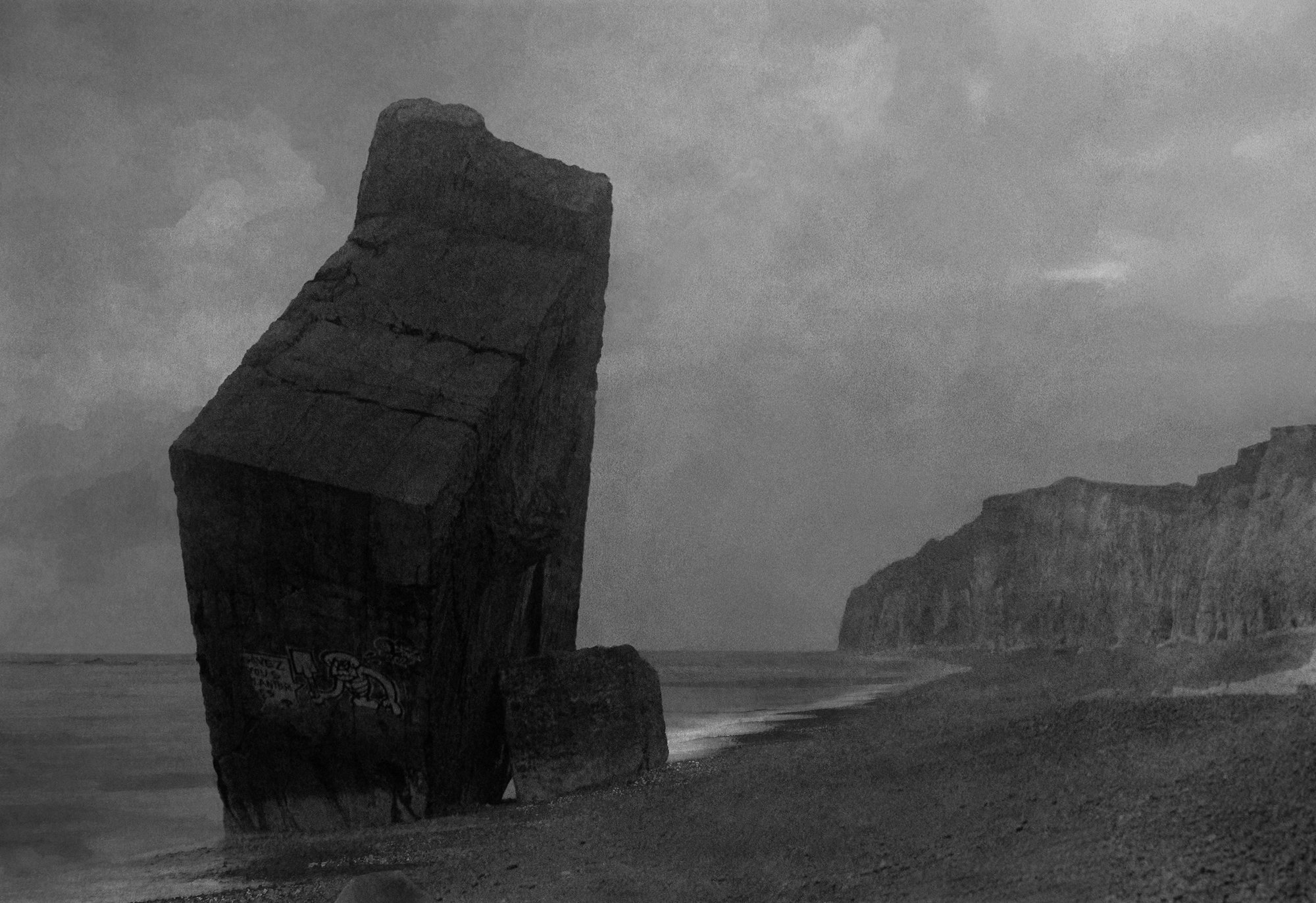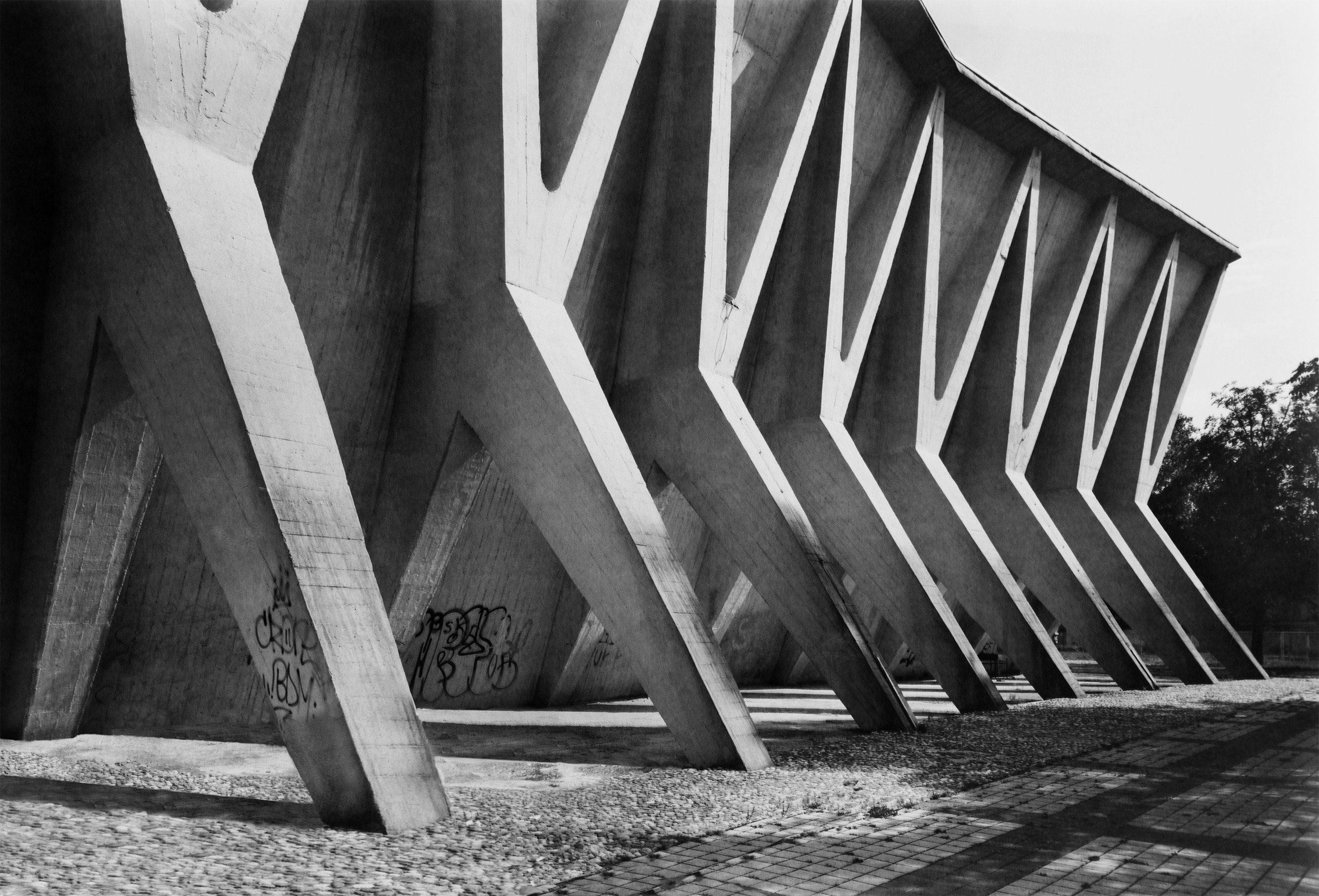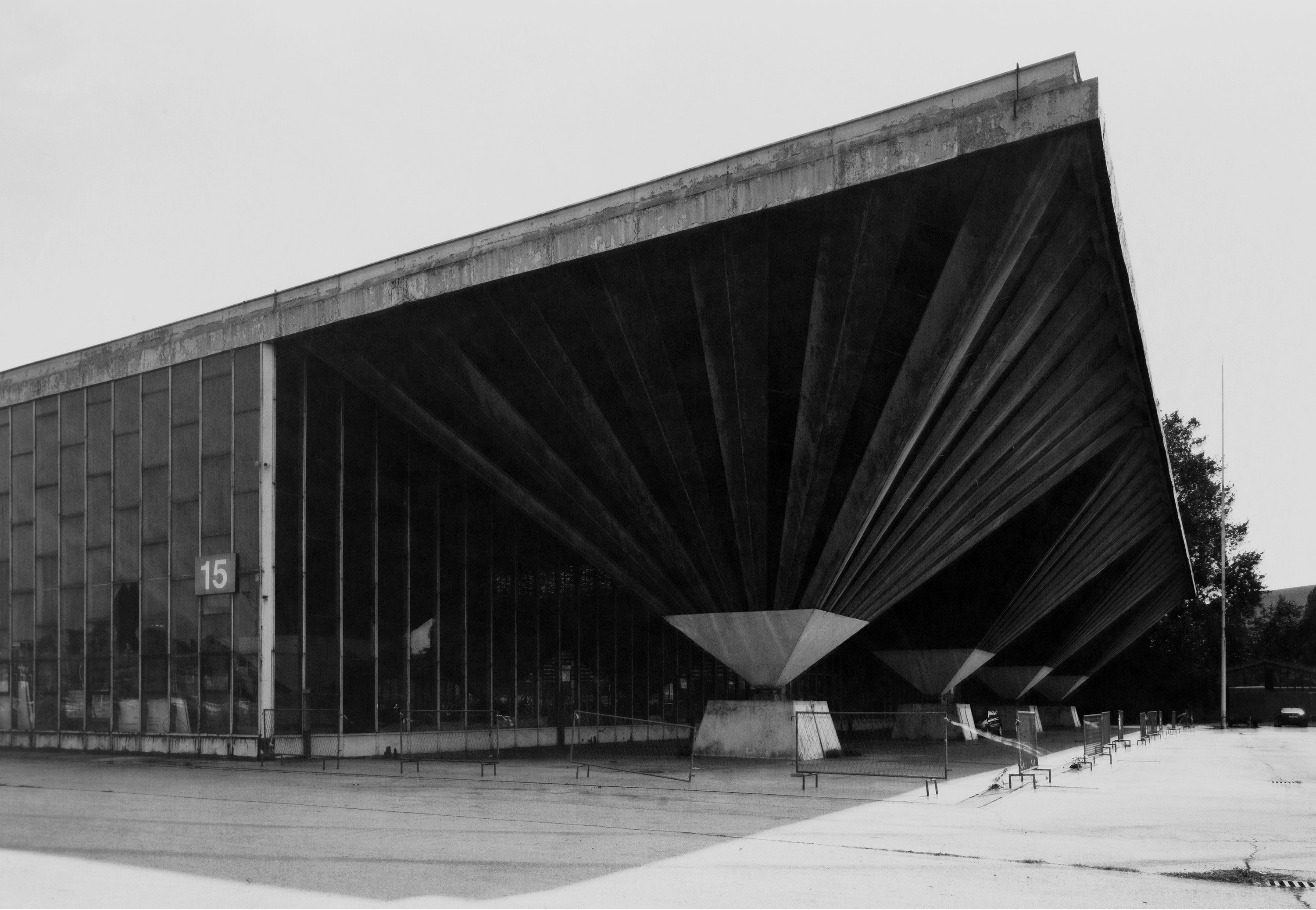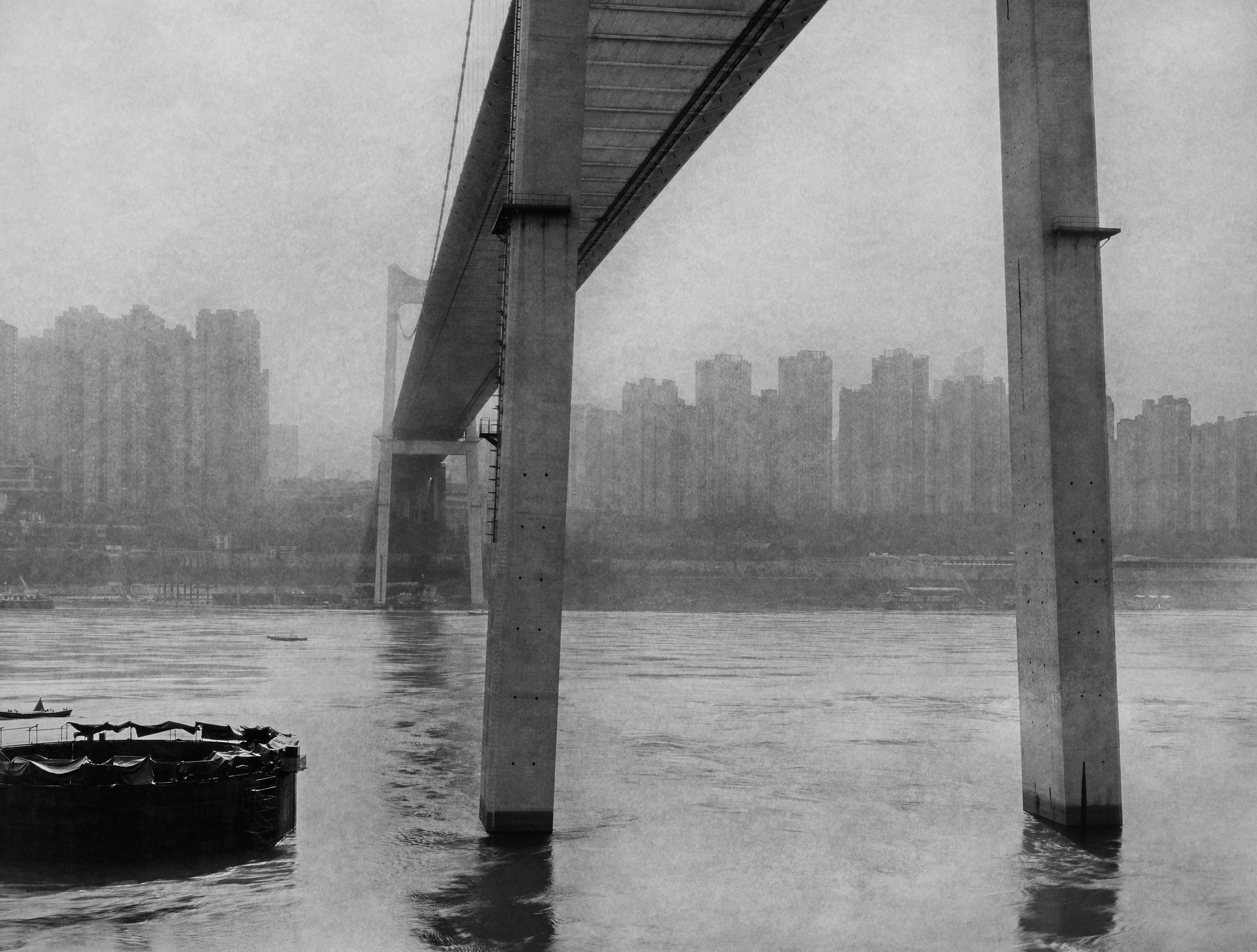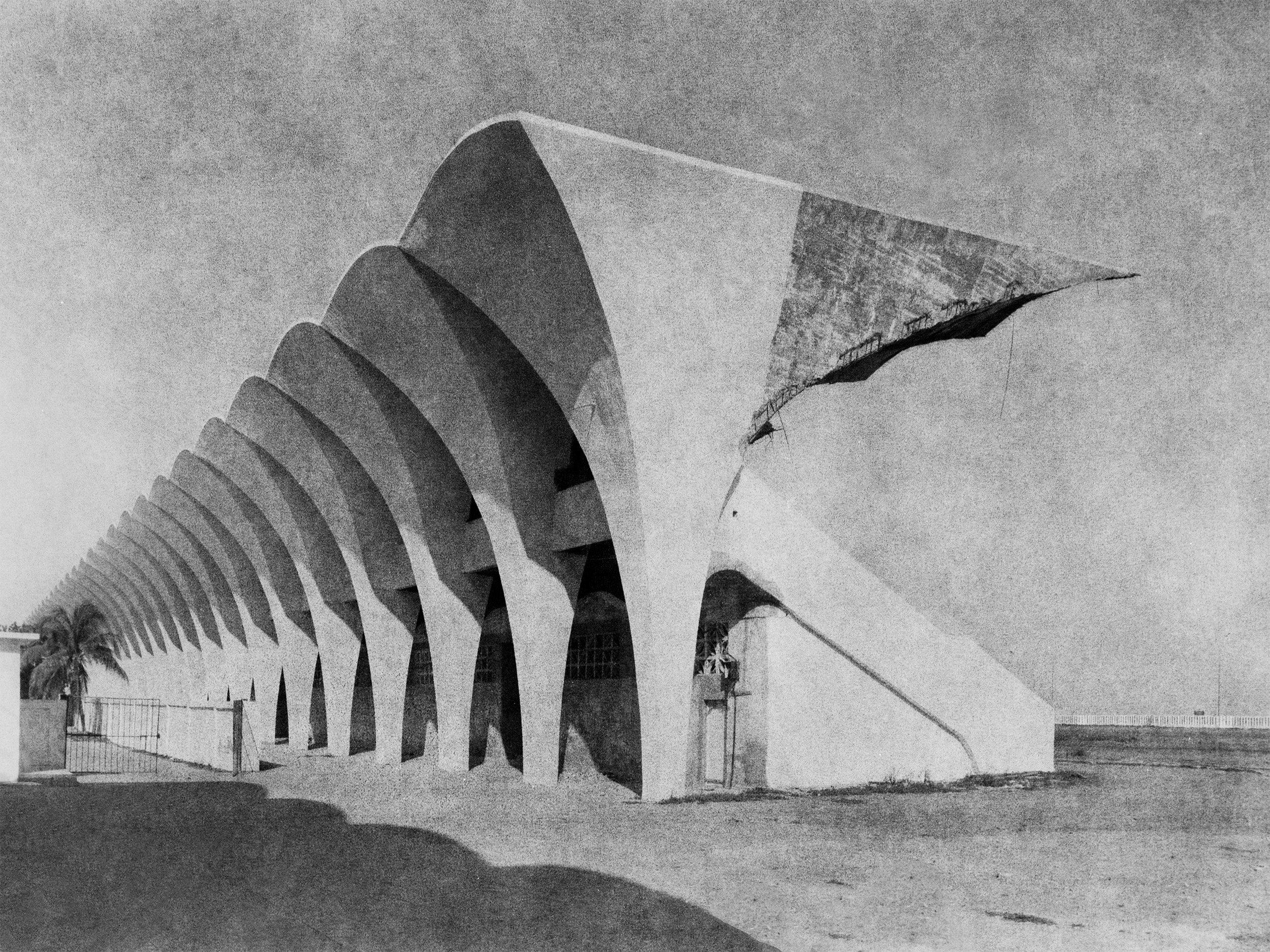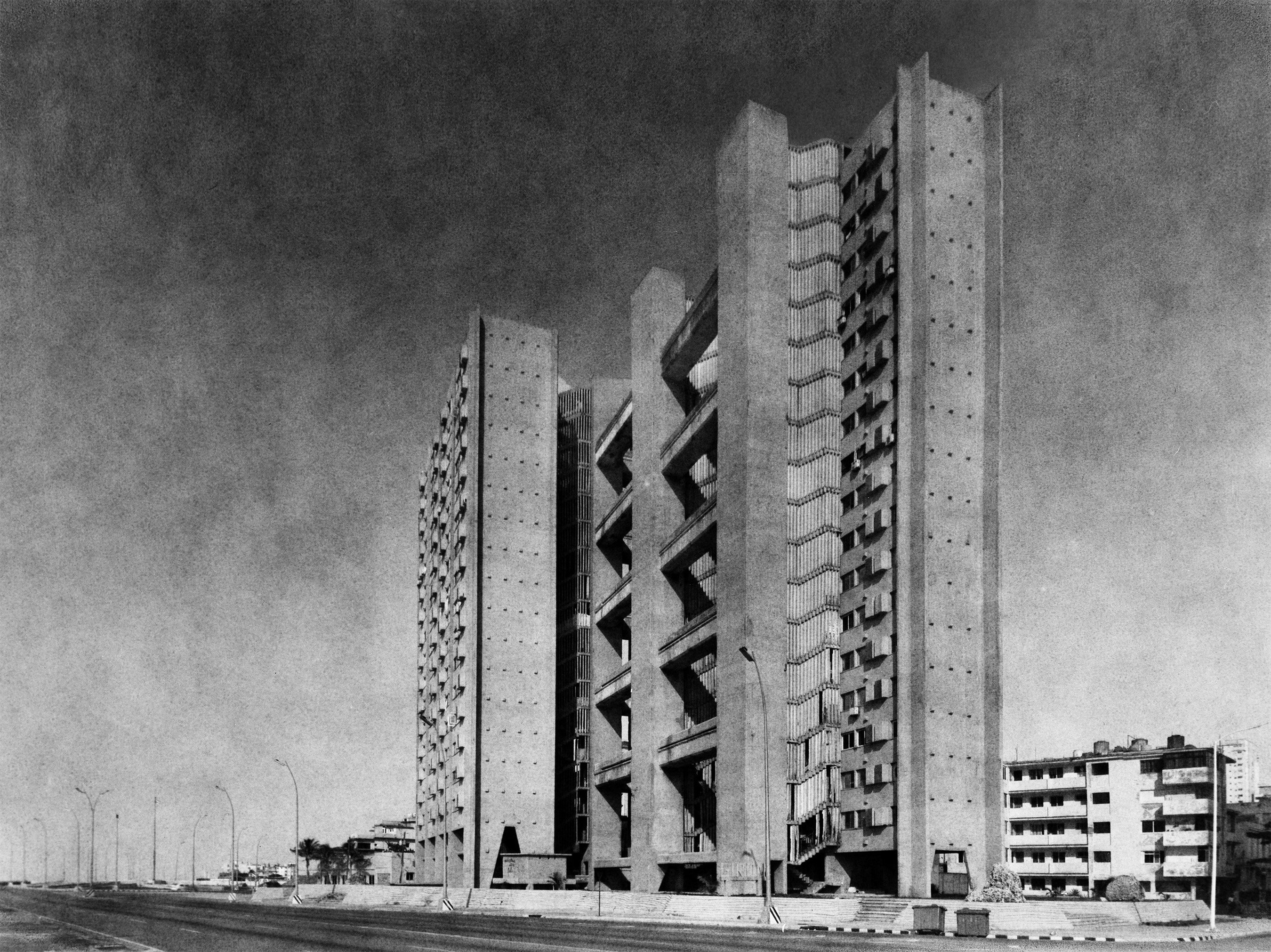the silent view
Kris Scholz
Shortlist
In the basement of an old house, I found a large format camera from the 1930th. It was rigidly mounted to a steel framework. On a flea market I found a 21 inch lens, which is the normal size for a 30 x 40 cm negative format. It had no shutter, but the aperture range went from 9 to 128. After several alterations I reduced its weight from 52 kg to 35kg what made the camera a little bit handier. Unfortunately there was no film produced in 30 x 40 cm Europe wide. Therefore I used paper negatives, by placing fibre paper in the wooden mahogany film holders.
As Baryta Paper has a red and green sensibility gap, these rays do not affect the paper. Only the blue rays of the light spectrum cause the black and grey-white reproductions of these unique architectural, industrial and landscape arrangements.
The pictures of this series show something what we can not see with our eyes. The material, which is sensible for different rays out of the light spectrum as the human eye, show black and white pictures of dramatic appearance that escape human perception. Although the images show a grey blurry sky you can notice strong shadows, which prove that there was bright sunshine when the photo was taken.
Over 20 years I took the camera on my travels to Europe, Asia and Africa. Around the Annapurna massif on a three week tour over the Thorong La, a mountain pass, the camera was carried by our sherpa, mostly in flip flops.
Because the wooden camera became too heavy, I now use my 5x7 (13x18cm) Sinar Norma large format camera when travelling to Africa, China or Croatia.
Even after many years I'm still exited because I never know exactly how the pictures in this procedure will look like, if we will see the mountains in the background, if the sea and the sky will separate at the horizon or if the opposite side of the river will appear clear.

